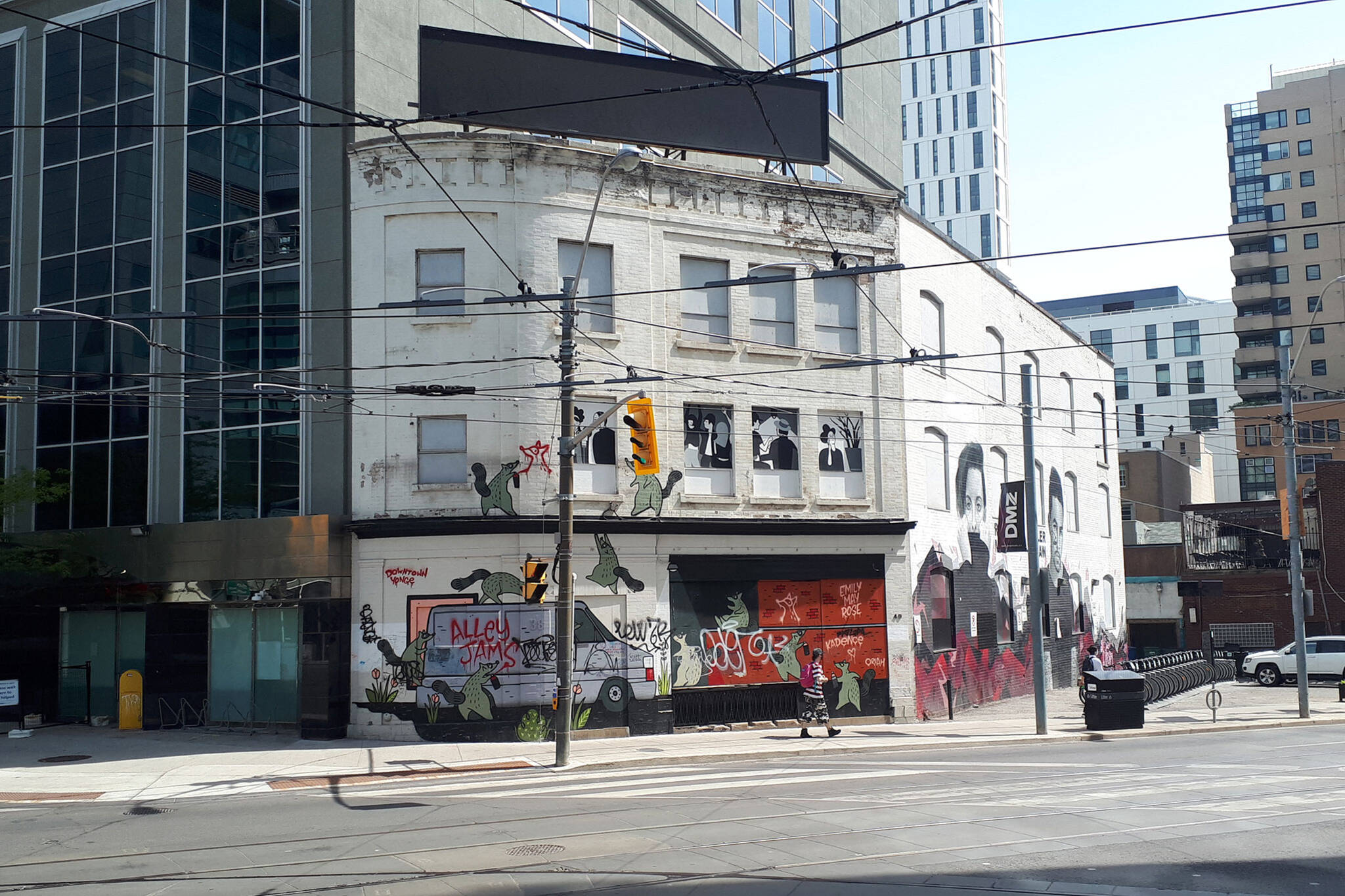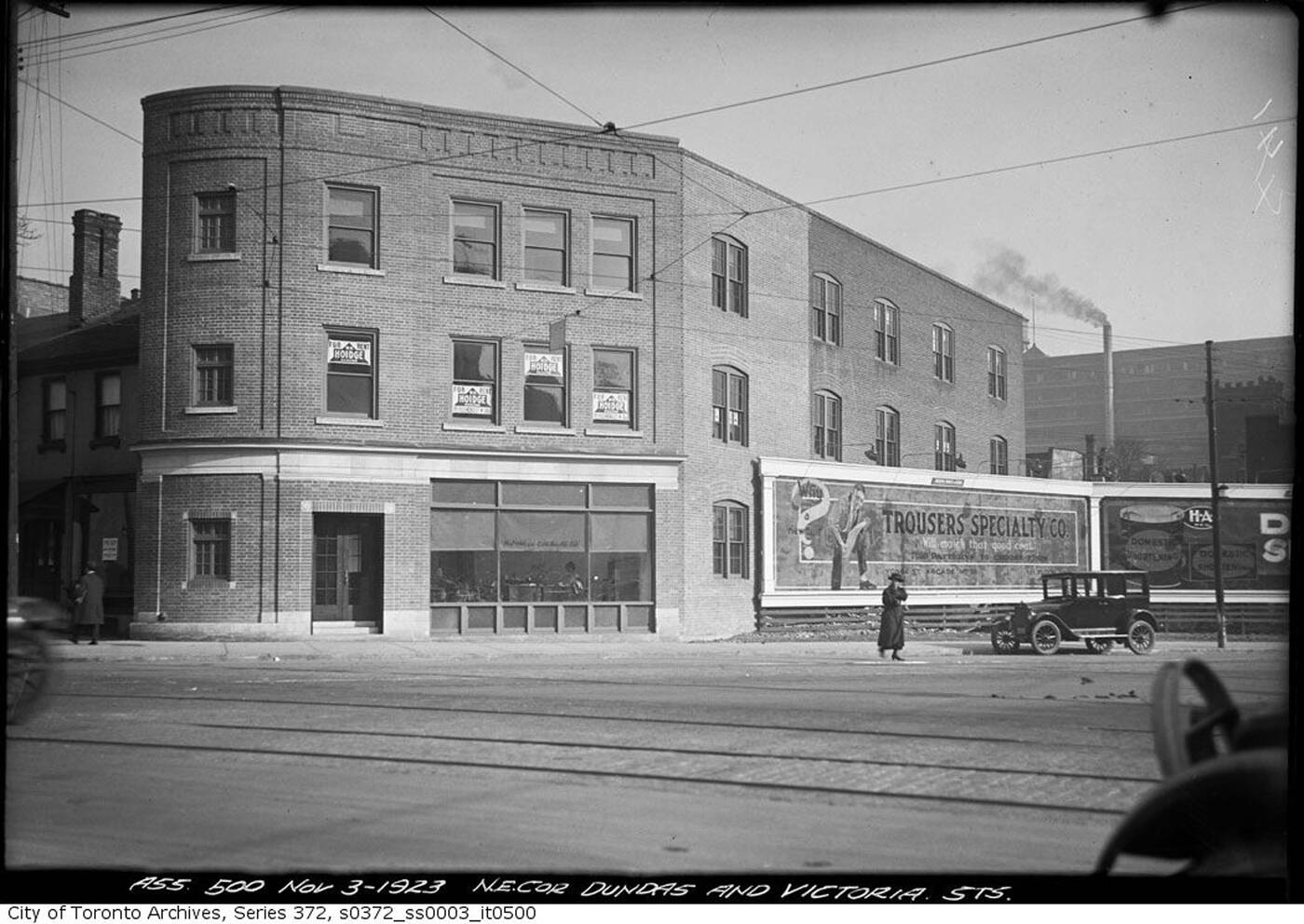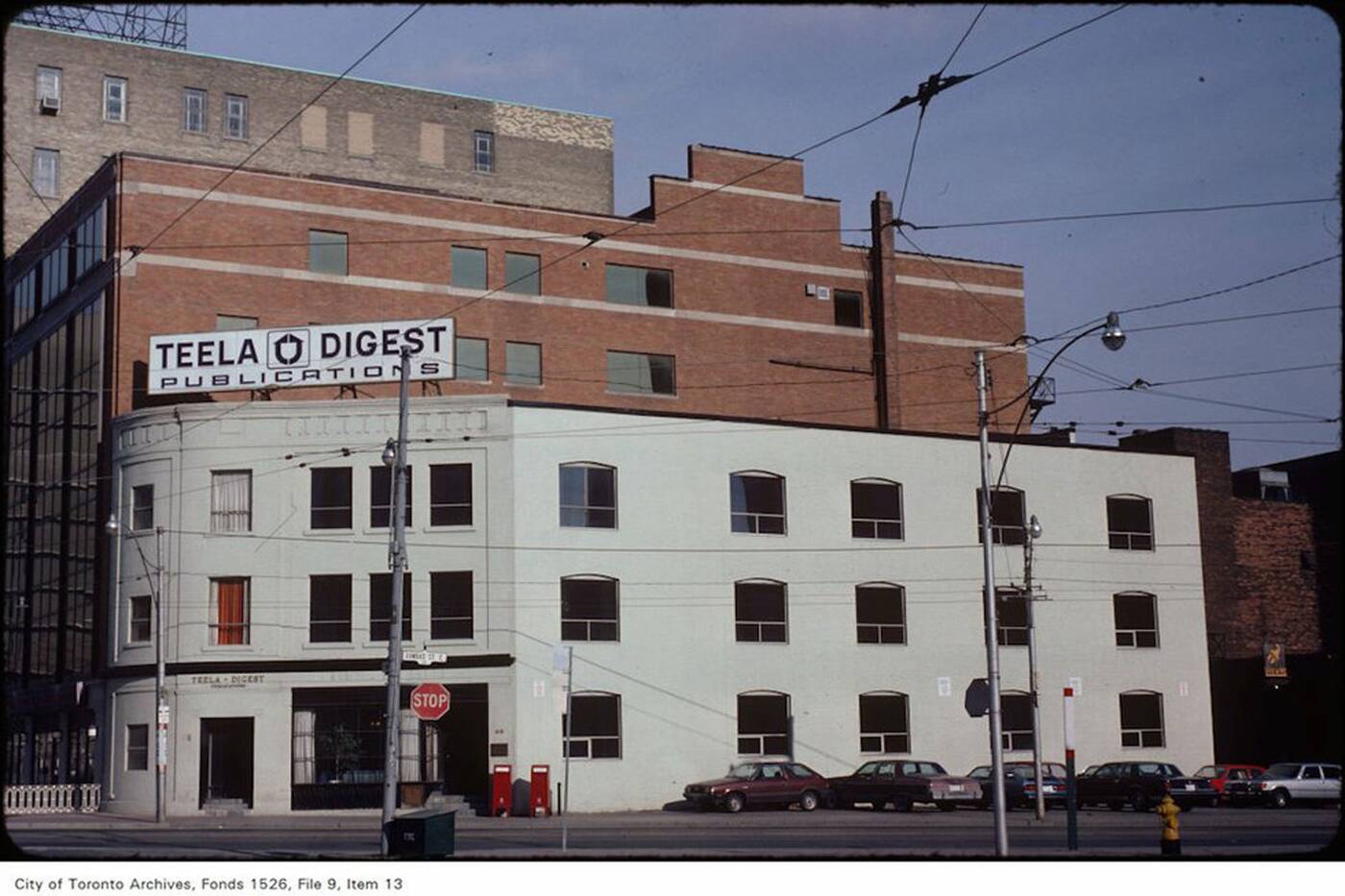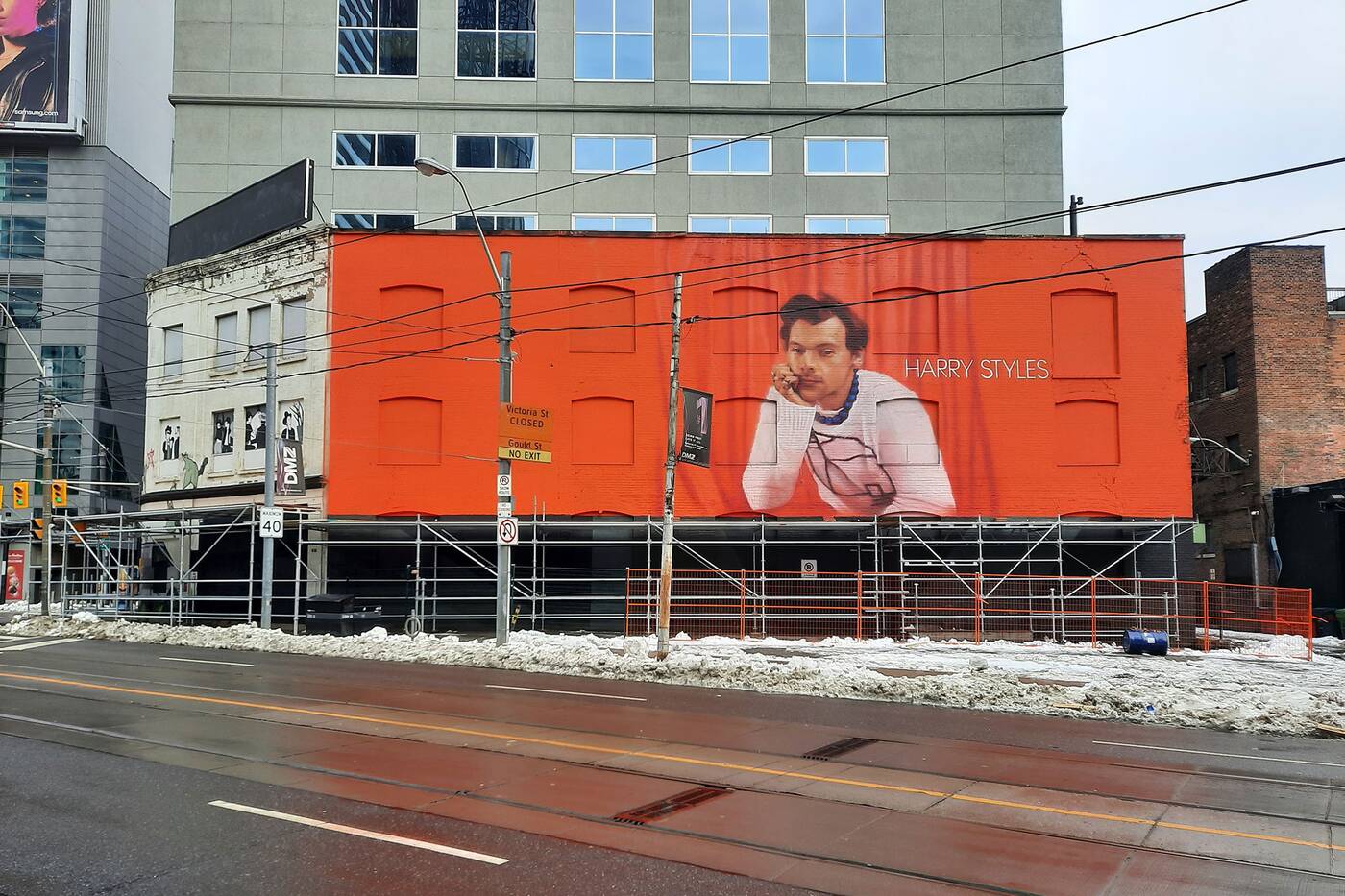
A brief history of that vacant building next to Toronto's Yonge-Dundas Square
You may not recognize the address, but you probably know 38-40 Dundas Street East, a three-storey office building in a classical, early 20th-century commercial style that is situated at the northeast corner of Dundas Street East and Victoria Street on Yonge-Dundas Square in Downtown Toronto.
It's a building with over a century of history, and, at present, an uncertain future.
The date of construction of 38-40 Dundas Street East has been identified as 1913 in several contemporary sources. However, there is the possibility that the extant building may have incorporated parts of an older structure predating the 1910s.
Notably, 38-40 Dundas Street East is situated directly on the site of the former, long-time residence of Rev. Dr. Egerton Ryerson and the Ryerson family.
Several historical sources indicate the former residence of Rev. Dr. Egerton Ryerson may have been heavily renovated and incorporated into the design of the extant building at 38-40 Dundas Street East instead of being outright demolished.
The building has been painted since at least the mid-1920s. Peeling paint on the rear (east) elevation has revealed yellow brick (likely from the mid-19th century) on the lower levels with red brick (likely from the early 20th century) on the upper levels.
Rev. Dr. Egerton Ryerson (1803-1882) constructed his home near the northeast corner of Victoria Street and Crookshank Street (later Wilton Avenue, now Dundas Street East) in the early-to-mid 1850s.
A historical drawing of the home published in Egerton Ryerson's posthumous autobiography The Story of My Life (1883) depicts a 2.5-storey residence of yellow brick construction with several rear additions — one of which contained Egerton Ryerson's personal study.
The Ryerson residence was noted to have had private grounds along its Wilton Avenue frontage. By the mid-1880s, a blacksmith and marble works had also opened operations on or near the rear Victoria Street Lane elevation of the Ryerson residence. Following the death of Egerton Ryerson in 1882, the house remained the home of Mary Ryerson (1808-1884) - his widow – until her own death in 1884.
The property then became the home of Charles Egerton Ryerson (circa. 1847-1907) — the son of the Rev. Dr. Egerton Ryerson and Mary Ryerson — between 1885 and 1886.
In about 1887, the property became home to James H. Cash – a picture framer by trade; and Henry Cash – a carpenter by trade. 1887 also saw the severance of the southern section of the grounds to facilitate the construction of buildings and residences along Wilton Avenue.
City of Toronto Directories indicate that various boarders and residential tenants were associated with the property until 1912. Between 1913 and 1920, the property had a mix of commercial and residential occupants with the building becoming wholly commercial (offices) by 1921. In 1913/1914, the property first appears associated with William A. Murphy — a builder, carpenter, and contractor by trade.
An October 1916 newspaper advertisement in The Globe references William A. Murphy as being "one of the best known and most prominent contractors and builders in Toronto" with his office at 269 Victoria Street and residence at 146 Shuter Street.
Murphy was the earliest commercial occupant of the building. Alongside William A. Murphy, John Gearon (a teamster) and Harry Teasdale (a painter) are also listed as occupants of the address in 1913/1914.
By 1920/1921, the building was wholly offices. Occupants included: Osborne Electric; Samuel Osborne Canadian Ltd. – a steel company; Auto Supplies Company Ltd.; the offices of architect Thomas White Lamb; the offices of manufacturing agent Edward W. Fisher; and the jewellery manufacturers Paquette & Hughes. Paquette & Hughes Ltd. were the victims of two high-profile armed robberies in January 1921 and November 1923.

In 1921/1922, the Powell Chemical Company moved into 38-40 Dundas Street East (then still known as 269 Victoria Street). The Powell Chemical Company – also known as the H. Powell Chemical Company — were manufacturing chemists.
Contemporary Dundas Street within Toronto — an evolution of the pre-Confederation colonization and military road — was created in 1917/1918 via combining multiple east-west streets in Downtown Toronto to create a thoroughfare situated part-way between College Street and Queen Street.
In the context of Dundas Street and Yonge Street, this involved the merging of Wilton Avenue east of Yonge Street and Agnes Street west of Yonge Street.
In 1922/1923, the City of Toronto undertook steps to eliminate a significant jog on Dundas Street that had formed as a result of Agnes Street and Wilton Avenue not being in direct alignment with each other.
This street realignment project – known as the Dundas Street Extension - resulted in the acquisition of several properties along the north side of Dundas Street East between Yonge Street and Victoria Street Lane, including part of the Powell Chemical Company property.
A November 1922 The Globe (Toronto) article specifically references that the City of Toronto's Assessment Department was slated to "arrange for a piece to be taken off the southwest corner of the Powell Chemical Company building on the east side of Victoria Street" as to prevent the "building project[ing] slightly beyond the line of the new diagonal piece of roadway" and to allow the completion of the realigned Dundas Street East.
This realignment also resulted in 38-40 Dundas Street East becoming situated directly at the intersection of Dundas Street East and Victoria Street; whereas it had previously been located several buildings north of the intersection.
Interestingly, a photograph of 38-40 Dundas Street East (then known as 269 Victoria Street) published in The Globe (Toronto) on 11 June 1923 – which shows the building prior to the creation of its distinct angled façade – specifically references the building as being the former home of Egerton Ryerson and notes that the building had become recently revealed due to street changes.
A subsequent photograph dated 3 November 1923 - taken after the creation of the distinct angled façade – uses the name The Powell Chemical Company Building in its caption. A similar fenestration pattern on the south elevation is visible on both the June 1923 and November 1923 photographs.
The June 1923 photograph also shows masonry that appears to have been recently altered and/or added around the doors, windows, and 3rd floor — indicating potential alterations, additions, and renovations to the structure.
The address 36-40 Dundas Street East and the name Powell Building had been formally assigned to the property as of 1924/1925.
The Powell Chemical Company remained in operation at 38-40 Dundas Street East until 1952. The Kahn Optical Company — an ophthalmic laboratory and manufacturer on the 2nd floor — was another long-term occupant of the Powell Building and was based there from 1925 until 1967.
In May 1930, 38-40 Dundas Street East suffered a major fire that originated in the offices of the Kahn Optical Company.
The Toronto Daily Star described the fire as a "spectacular blaze [...] so much water was poured into the building that it came out in a Niagara-like torrent, carrying hundreds of partly burned tortoise shelled eyeglass frames into the street" This fire likely resulted in further alterations to the building.
By the late 1960s, 38-40 Dundas Street East was entirely vacant. By the mid-1970s, 38-40 Dundas Street West was used as the offices of Teela Market Surveys / Teela Publications. Teela remained at 38-40 Dundas Street East through the early 1980s. The latest commercial tenant was Hakim Optical. The building has been entirely vacant since 2010.

The property was expropriated by the City of Toronto in the mid-to-late 1990s as part of the 1996 Yonge Dundas Redevelopment Project, which eventually resulted in the creation of Yonge-Dundas Square in the early 2000s.
The building is now within CreateTO's portfolio. Debates have arisen over the future of the building, with adaptive reuse proposals of the building having been the subject of numerous articles and a 2018 Architectural Conservancy of Ontario: NextGen facilitated design charrette.
Popular proposals have included use as a museum and/or music incubator. More recently, various murals have been painted on the exterior of the building — including Alley Jams by Emily May Rose and a large Harry Styles mural. In May 2021, I nominated the building for heritage status.

In 2015, an engineering study was undertaken to assess the condition of the building. This 2015 study — not presently available to the public but referenced in public documents — reportedly notes "structural concerns with the building's masonry façade, masonry parapet walls, floor areas within the building and fire escape."
Subsequently, in February 2023, the City of Toronto issued an Order to Remedy Unsafe Building to itself, noting that "NO work has been carried out to date to permanently repair the building and remediate the structural concerns that are creating the unsafe conditions to the public in and around the building." Scaffolding has since been erected around the building as of early March 2023.
Hopefully, steps are being taken to ensure this historic building is repaired and not lost to demolition by neglect.
Adam Wynne
Latest Videos
Latest Videos
Join the conversation Load comments







